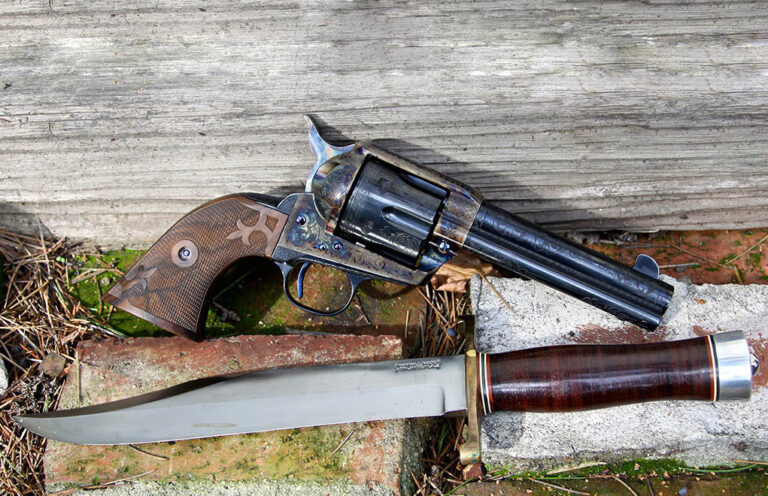
Critters, varmints and other beasts can ruin a nice night in the woods, so next time you're packing up the tent, don't forget to grab a campfire handgun.
The night was bitterly cold and pitch black except for the faint silvery starlight that helped guide my horse and me down the steep mountainside. We made our way toward the distant glow of what I knew to be our base camp on this, my third unfruitful day of a Rocky Mountain elk hunt. Upon nearing the welcome glow and warmth of the campfire, I reined up, drew my still unfired .54-caliber Hawken from its saddle scabbard and dismounted just as the camp cook came running out of the tent screaming, “That gosh-darned, son-of-gun field mouse has been in the flour sack ag’in and they ain’t gonna be no biscuits if this keeps up!”
Of course, he didn’t say, “Gosh-darned, son-of-a-gun.” He used words that were more of a colloquial nature. But the message was clear enough when I entered the tent and saw several small holes gnawed in the flour sack. And as if to torment poor “Cookie” further, the tiny field mouse poked its head out from around the flour sack at that very moment and stared at us.
“Let me handle this,” I whispered as I silently sat down on a bench, quietly cocked the hammer of the Hawken, and set the rear trigger. Then, slowly raising the rifle to my shoulder and lining up the rear buckhorn sight with the front blade until it was perfectly positioned on the field mouse, I touched off the shot. The voluminous roar of the Hawken was accompanied by a thick, white tent-filled cloud of FFG smoke that momentarily obscured everything from sight. But as the haze slowly drifted out the open tent flap into the night, we could barely make out what little remained of our furry antagonist.
I admit this was a case of being overgunned for the occasion, but at the time, the Hawken was all I had. Much later, I found myself lamenting that I hadn’t brought my Smith & Wesson K-22 along on this hunt, as it clearly would have gotten the job done just as efficiently and much less dramatically. Since then, I have always packed a pistol along on any outdoor outing where it’s legal to do so.
Not Hunting Handguns
I’m not talking about hunting handguns here. In fact, it is just the opposite, as many of those big-bore bruisers are often too bulky for a hip holster and, outfitted with a scope or other sighting reticle as many of them are today, too awkward to toss in a backpack or tuck away in your bedroll. Rather, I’m referring to “campfire handguns,” one essential tool many outdoorsmen and women never think about or take with them when hiking or hunting or just to accompany them on a picnic in the woods. And as such, they don’t realize their omission until they need it. Or wish they had it. Or until it’s too late.
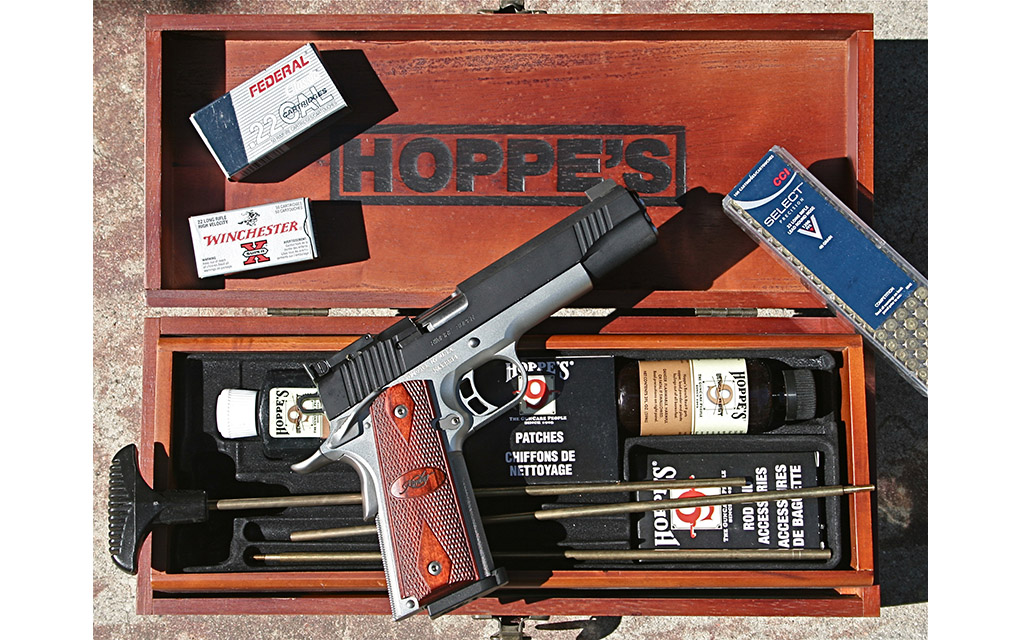
More specifically, these are those handy sidearms—single-actions, double-actions, or semi-automatics—that many of us pack on our hips when we’re back at camp and not otherwise lugging around a heavier and more cumbersome rifle or shotgun. Campfire handguns don’t take up much room in a backpack yet are a source of comfort when outdoors, especially when unwanted critters—whether on four legs, two, or slither—invade our space. Yes, campfire handguns can be a definite source of self-protection and leisure-time enjoyment, such as après-hunt plinking. And while grabbing a .30-‘06 to eradicate a food-nibbling squirrel (or using a big-bored muzzleloader as I did) may be the ultimate form of overkill, drawing a .22 and dispatching the little thief is not only more effective but, in many ways, can be a form of therapy, especially when we haven’t pulled the trigger on anything else thus far on a hunting trip. This, again, brings to mind that particular elk hunt.
The campfire handgun concept actually started around the first part of the 20th century, with the growing practice of having a relatively easy-to-carry pistol, usually of a small caliber, to toss into your “kit,” or portable stash of supplies that you carried for the day, which was often a saddle bag, fishing creel, tackle box, or even a lunch bucket.
Although the term soon morphed into widespread usage, it got official recognition in 1936 when Smith & Wesson introduced the 22/32 Kit Gun, a .22 rimfire double-action revolver built on a slightly larger .32-caliber frame. Eventually discontinued due to lagging sales coupled with World War II, this style of handgun (medium frame, small caliber) was reintroduced in 1953 in an improved model as S&W’s “22/32 Kit Gun, Model of 1953.” Thus, the kit gun nomenclature was officially re-established for a new generation of shooters. Today, Smith & Wesson still makes a dramatically updated version of this trend-setting pistol as its eight-shot Model 317 Kit Gun. Of course, nowadays, numerous other handguns qualify for the title of kit gun. However, that term has matured to include some larger-framed and bigger-caliber versions to become campfire handguns.
But from the 1920s through the ’50s, some .22 rimfire pistols seemed tailor-made for outdoor outings. Back then, various models of the Colt Woodsman and Hi-Standard semi-autos were some of the most popular guns with which to punch holes in tin cans, not to mention rabbits, squirrels and prairie dogs. After all, if you didn’t hit your target with the first shot, you would have a magazine full of repeat shots to continue trying your rapid-fire luck with low-cost .22 rimfire cartridges.
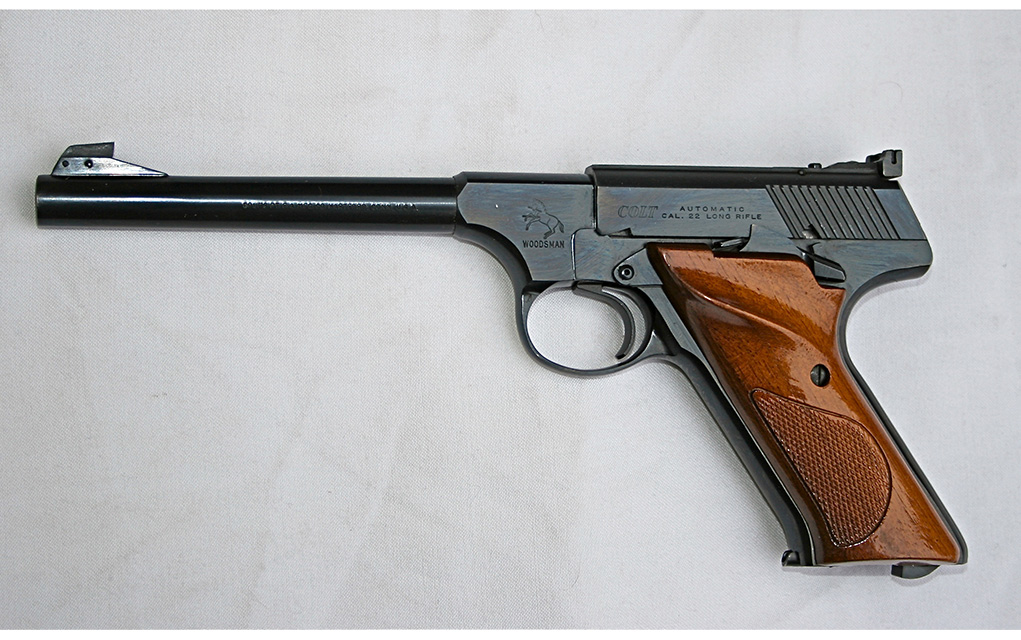
But beginning in 1949, these guns gradually gave way to ones like the more affordable Ruger Standard—the gun that launched Sturm, Ruger & Co. into the stratosphere of success. At the time, a High Standard G-B Hammerless was selling for $50, and Colt’s fixed-sight Sport Model Woodsman went for approximately $69, but the original version of Ruger’s first .22 semi-auto listed for only $37.50. Today, that gun is still in the line, although it has undergone several changes. As of this writing, it currently exists as the 75th Anniversary Mark IV and various Tactical and Competition models exist. But countless numbers of the original versions of Colt, Hi-Standard, and Ruger .22 semi-automatics are still found as regular staples in backpacks and camping gear throughout the country. However, some of these earlier guns have also attained collectible status.
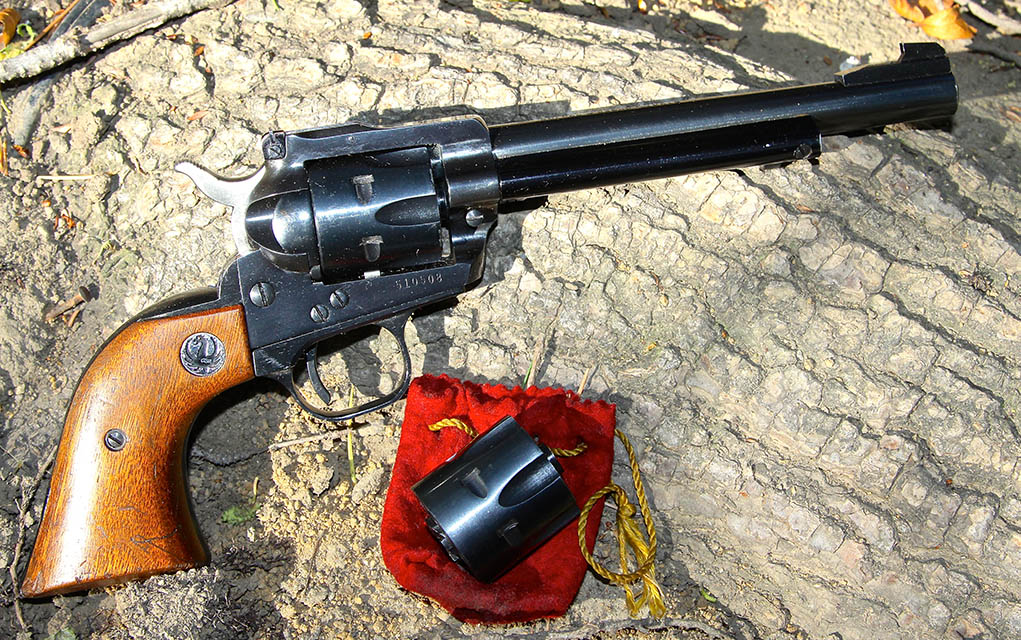
The aforementioned S&W K-22 revolver is also in the category of campfire handguns turned collectible, as is the early Ruger Flatgate Single Six, which first appeared in 1953 and was initially priced at $57.50. Many modern-day shooters don’t even know of its existence, as it only lasted for four years, after which it began being made with a more traditionally styled rounded loading gate. To its credit, the Ruger Single Six is still in the line and, for me, is one of the best campfire guns you can take along on a fishing or hunting trip (especially the Super Single Six Convertible, which has an extra cylinder chambered in .22 Magnum). And let us not forget the Colt Frontier Scout, a scaled-down .22 rimfire version of the famed Single Action Army, produced from 1958 until 1986; it was a go-to thumb-buster for many who couldn’t opt for the pricier SAA. Those vintage guns still serve that purpose today, although I have seen more than one three-digit offer being made to a fellow hunter who just happened to bring his Scout along as a campfire handgun.
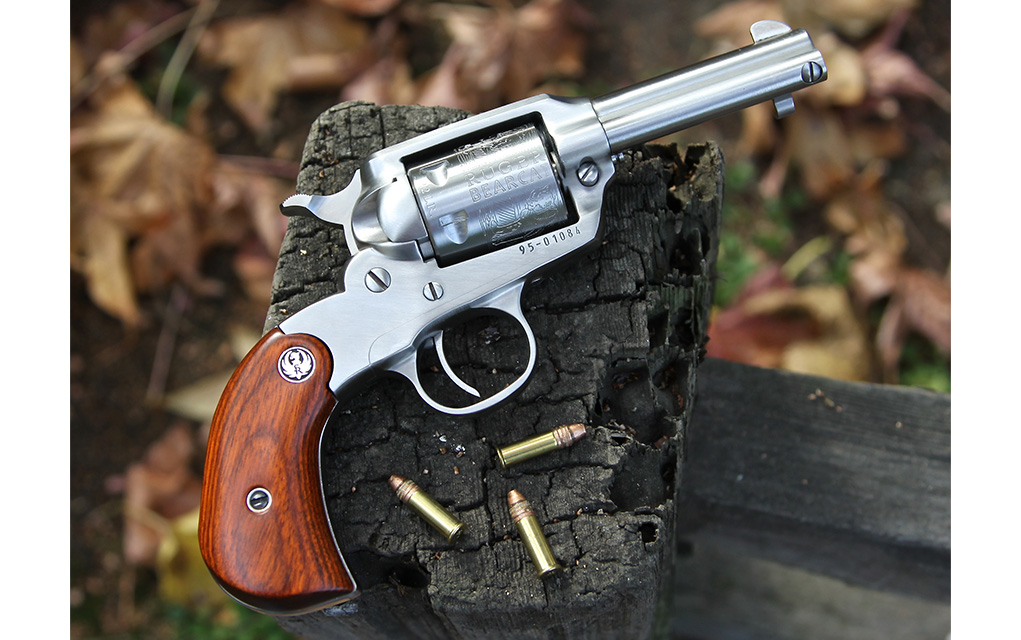
In 1973, Ruger revamped its line to include the New Model Single Six, which features a transfer bar that enables the gun to be carried with six rounds instead of five. Now, there is even a New Model Single Seven and a New Model Single Nine, giving you even more thumb-cocking fun without reloading after the sixth shot. But for me, one of the most fun campfire guns is the Ruger Bearcat, a compact, fixed sight .22 sixgun that—especially in its stainless steel configuration—can be tossed in a tackle box or slid into a coat pocket with nary a care. And Ruger’s new .22 Wrangler, which combines zinc and aluminum to keep costs and weight to a minimum, is one of the newest and most economical campfire revolvers yet.
.22 Or Something Bigger?
Of course, .22 rimfire handguns are the most cost-effective ways to plink away at tin cans and sticks and, yes, even pieces of leftover fruit (hollowpoints and oranges at 20 paces, anyone?), but bigger-bored handguns, such as a .44 Special, .45 Colt, or even a .44 Magnum can be much more effective on larger furbearers and other unwanted visitors who may have more than a few nibbles of crackers on their mind.
For example, as the only non-Texan member of a ragtag deer hunting group known as the Rio Concho Association, I used to pack a .44 Special Smith & Wesson Second Model Hand Ejector on our annual deer hunts in Texas. Inasmuch as we were hunting on a ranch owned by one of the Association’s members and since deer season overlapped with turkey season and javelinas were rampant, there was no telling what one might encounter as we traipsed through the scrub brush. On subsequent hunts, I often took one of my S&W Model 29s, usually loaded with .44 Specials but sometimes stoked with full-powered .44 Magnums, depending upon what I was hunting and where. In truth, I am rather partial to bigger-bored campfire handguns—or at least I was until the current availability and ammo cost have made me think twice about each campside shot I take.
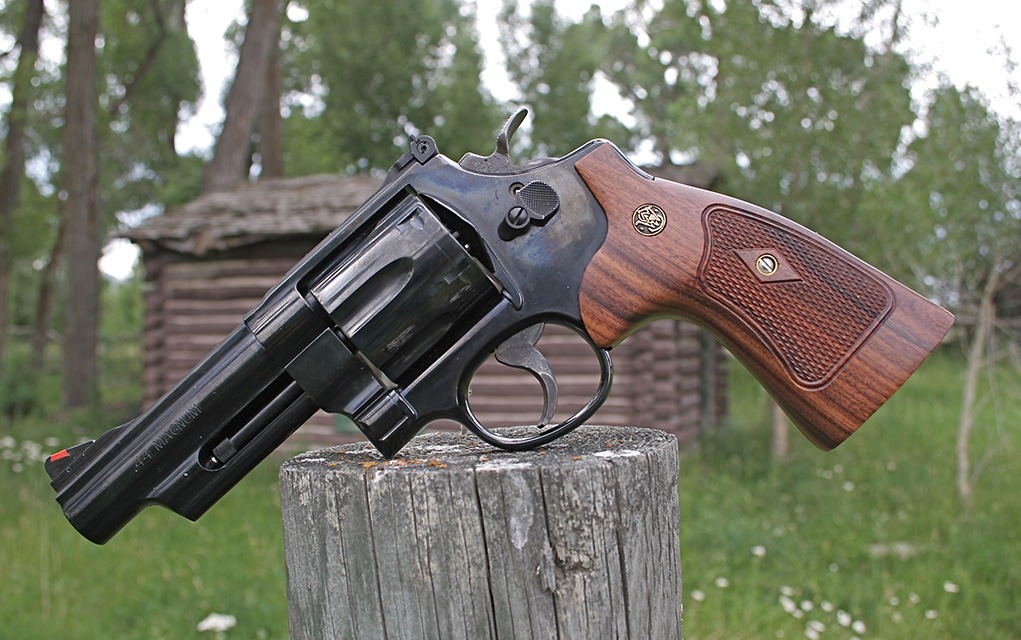
In my opinion, double-action revolvers require a bit more care than single-actions as campfire guns, as cylinder latches can be accidentally opened on some DA guns as they are shoved into pouches and backpacks. So, I advise keeping these wheelguns in a holster, whether on your belt or stored in your pack, and a pistol case is ideal for transporting handguns safely to your campsite. Galco and 1791 both make revolver and semi-automatic leather holsters with quick on-again-off-again steel belt clips for those times when you want to shuck your handgun quickly and easily and, just as quickly, reattach it to your belt. For those occasions, I’ve recently been using 1791’s new IWB Fair Chase Deer Hide Holster for my Smith & Wesson Model 36 with its rarely encountered 3-inch barrel.
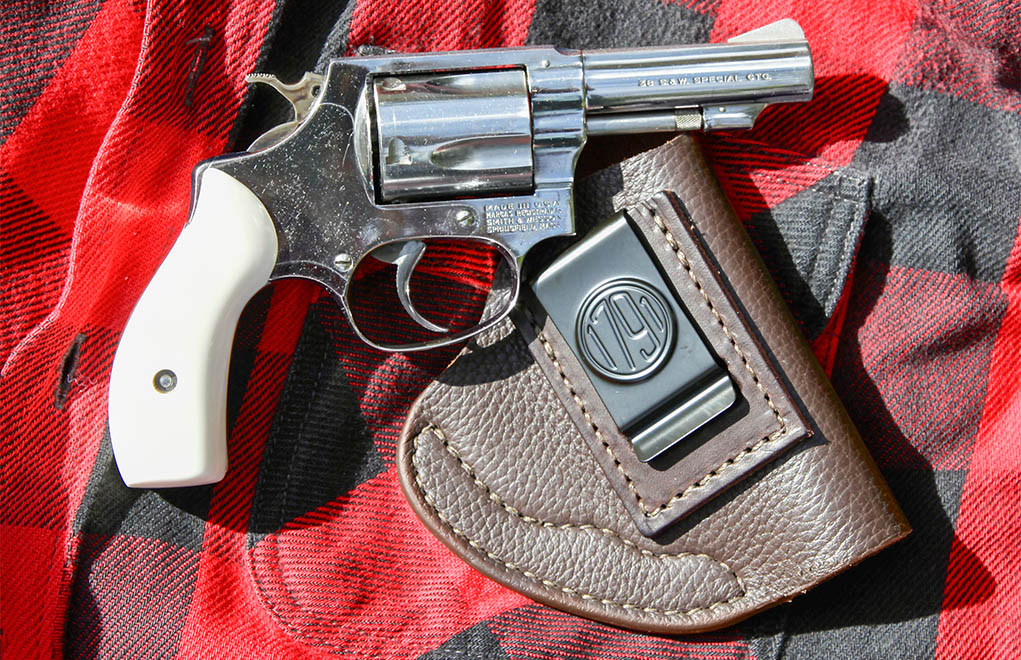
Since semi-autos are sometimes more complicated to operate than revolvers, they require more diligence in their campsite use. For example, by simply swinging out the cylinder on a double-action revolver, one can quickly confirm whether or not the gun is loaded. However, an “empty” semi-automatic pistol might still have a round in the chamber even though the magazine has been removed. Leisure shooting is no time to let your guard down or ignore the basic rules of gun safety.
What About When You're Away From Camp?
This might be a good place to caution picnickers and hunters who will be away from their campsites for any length of time to keep their handguns out of sight and secure them from unwanted access, as visitors to your camp may not be just “visiting,” but are more intent on looting. It’s a sad commentary, but some people steal things when you’re not around. That means either taking the gun with you, locking it in the glove compartment of your car or truck, or, better yet, securing it in an attached gun safe that is permanently installed in your vehicle. But sometimes, this isn’t always feasible in a wilderness camp where the terrain isn’t conducive to four-wheel drive, or vehicles aren’t allowed. In that case, the only other option is to clandestinely hide the handgun while away from your campsite. However, speaking from personal experience, there is such a thing as hiding it too well.
Once, on a deer hunt with one of my buddies in the rugged mountains on the eastern side of the Sierra Nevadas, we had to hike in for two hours to get to where the “big bucks” were. That meant packing in with all our gear, including my pre-64 Winchester Model 70. But I also took a 3-inch-barreled Third Model Colt Single Action Army Sheriff’s Model for my campfire handgun, rationalizing that the shorter barrel would cut down weight. The fact is, I just wanted to have that gun along on this hunting trip.
When it came time to start hunting at the break of dawn, I began worrying about leaving that highly desirable Sheriff’s Model in camp, even though we were in an extremely remote area. In fact, during our hunt, we discovered an old cowboy’s grave from 1910 that had never been touched. Nonetheless, I hid the sixgun so well that I couldn’t remember where I had hidden it when we returned to camp after a grueling day climbing over rocks and battling through blowdowns! I spent the better part of the night looking for that sixshooter and finally had to wait until daylight to continue my search when I found it securely ensconced in the crotch of an old, weathered tree. It cost me half a day’s hunting, but I didn’t lose my campfire handgun.
By far, the safest handgun to have in camp is a single-action revolver, as, assuming the hammer is resting over an empty chamber (on non-transfer bar models), there is no way the gun can be fired unless the hammer is manually pulled back and the trigger depressed. Naturally, one of my favorite single-action revolvers is the Colt Peacemaker, which, if you think about it, started as the first popular campfire handgun over a century ago. However, as the value and scarcity of these SAAs have grown over the years (have you priced a Third Generation Colt SAA lately?) I find myself opting for alternatives. One of the best is the extremely well-made Standard Manufacturing Single Action, an identically proportioned mirror image of the SAA. Yes, they cost about as much as a factory-new Colt SAA, but they are much more readily available and boast all-steel parts. It is a solid, quality gun in every respect, and my engraved .45 version, with its 4¾-inch barrel, is destined to continue with me on many of my campfire handgun adventures, maintaining a tradition I started over 40 years ago.
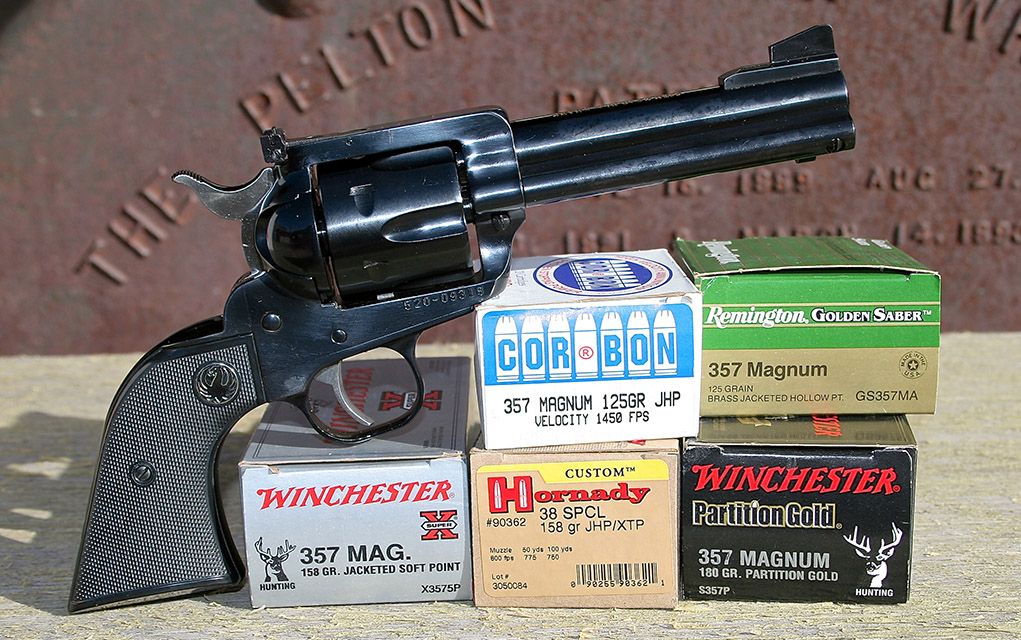
In fact, the first campfire handgun I ever took with my hunting rifle was a first-generation Colt Single Action Army, which proved its value right out of the starting gate on a big game hunt in the Cedar Flats area of Arizona. Late one night, induced by nature’s call, I was compelled to leave the sanctity of my warm sleeping bag. Not wishing to take my Winchester 71 on what would invariably be a two-handed endeavor, I grabbed the .45 Colt instead and ventured into the blackness outside my tent. The unmistakable “whirr” of a buzz-worm (“rattlesnake” to you flatlanders) prompted me to freeze in my tracks instinctively. My flashlight immediately confirmed my fears, for the culprit was starting to coil and getting ready to strike. Barely able to use the Peacemaker’s rudimentary sights, I fired three quick shots as fast as my thumb could work the hammer. Honesty compels me to admit that only one of those shots hit its mark, but it made me a believer in the value of always taking a campfire handgun along on hunting and camping trips.
Editor's Note: This article originally appeared in the July 2025 issue of Gun Digest the Magazine.
More On Revolvers:
- .357 Magnum Revolver: Controllable Concealed Carry Options
- Best Concealed Carry Revolvers For Personal Defense
- Fighting Revolver Project: Smith & Wesson Model 586
- Rolling With A .45 ACP Revolver

Next Step: Get your FREE Printable Target Pack
Enhance your shooting precision with our 62 MOA Targets, perfect for rifles and handguns. Crafted in collaboration with Storm Tactical for accuracy and versatility.
Subscribe to the Gun Digest email newsletter and get your downloadable target pack sent straight to your inbox. Stay updated with the latest firearms info in the industry.

![Best Concealed Carry Guns In 2025 [Field Tested] Wilson Combat EDC X9S 1](https://gundigest.com/wp-content/uploads/Wilson-Combat-EDC-X9S-1-324x160.jpg)


![Best 9mm Carbine: Affordable PCCs [Tested] Ruger Carbine Shooting](https://gundigest.com/wp-content/uploads/Ruger-Carbine-Shooting-100x70.jpg)
![Best AR-15: Top Options Available Today [Field Tested] Harrington and Richardson PSA XM177E2 feature](https://gundigest.com/wp-content/uploads/Harrington-and-Richardson-PSA-XM177E2-feature-100x70.jpg)

I found the article “Campfire Handguns”
Very Interesting, keeping my attention and waiting for it to mention shot shell use for revolver calibers and even some semiauto handguns, (especially after mentioning the Hawken rifle used in the tent on the mouse). Really? Haha!
I will keep one or two shot loads in my 44, 357 or 38 special, easily selected when needed. I’ve killed rattlers at 10 feet and amazingly even a tree squirrel at 10 yards!
Handy when you need ‘em and still have the bullet cartridges where you put them in the cylinders.
I’ve used them in 22 rf, 38 spcl/357 rem mag, 44 spcl/44 rem mag and 9mm semiauto. Note: they’re not as convenient in semiautos, as they may not cycle, so best to throw one in the chamber when needed, then when fired may need to manually cycle the slide. The Taurus Judge is another good camp sidearm with 45 LC and 410 shot.
I suppose we could go on, but your article sparked some good memories. Thanks for those and your writings.